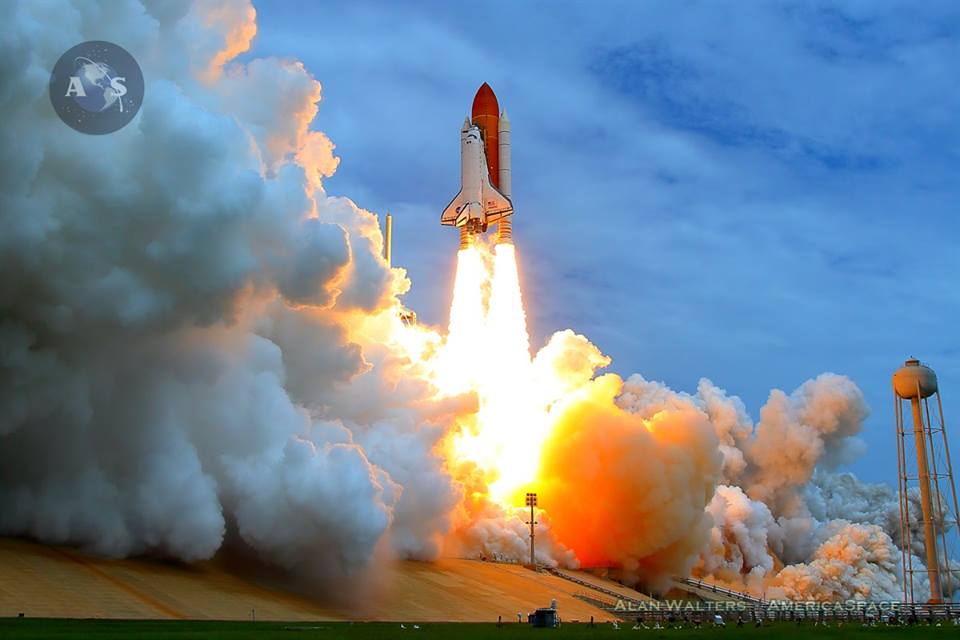
A string of “Go” calls—interspersed with an occasional poignant remark about the contributions of the Space Shuttle program over three decades of operational service—reached the ears of Launch Director Mike Leinbach, seated at his console in the Launch Control Center (LCC) at the Kennedy Space Center (KSC) in Florida on the morning of 8 July 2011. All stations, from the Orbiter Test Conductor (OTC) to the Superintendent of Range Operations (SRO) and from the Safety Console to STS-135 Commander Chris Ferguson, seated on the shuttle’s flight deck, confirmed to NASA Test Director (NTD) Jeff Spaulding that they were ready to launch Atlantis on her 33rd and final mission.
The ship which sat out at Pad 39A that morning, attached to its bulbous External Tank (ET) and twin Solid Rocket Boosters (SRBs) was almost indistinguishable, visually, from the Atlantis which first rocketed into orbit on Mission 51J, three decades ago this week, in October 1985. However, across a lengthy career of orbital flight, Atlantis had secured her reputation as the second most-flown shuttle and had cemented her credentials as the “heavy-lifter” of the fleet. Single-handedly, between 2000 and 2011, she had lofted more than half of the massive Integrated Truss Structure (ITS) of the International Space Station (ISS), as well as delivering three key pressurized facilities. Now long-retired, her legacy circles the globe at this very moment, home to six spacefarers and forerunner to humanity’s future explorations in low-Earth orbit and beyond.
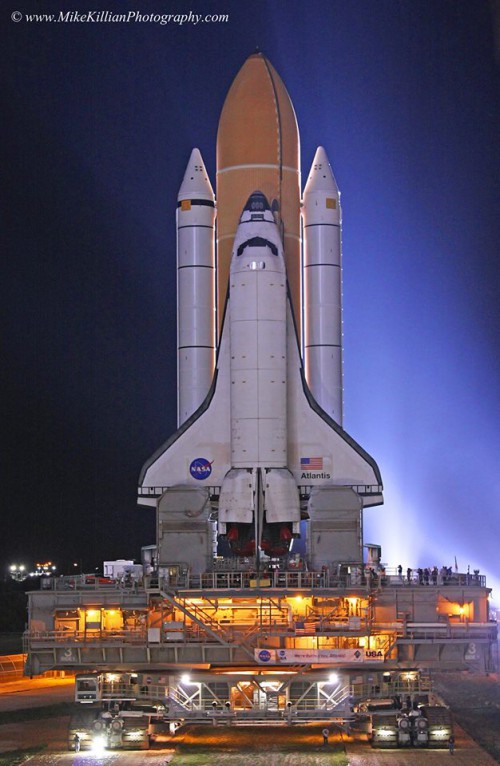
After passing through the Go/No-Go calls, and with all stations declaring no constraints to launch, Leinbach radioed Ferguson.
“Atlantis, Launch Director. Air-to-Ground-1.”
“Atlantis, Go,” replied Ferguson, a veteran of two previous shuttle missions, former Deputy Chief of the Astronaut Office and skipper of the first four-member crew to ride a U.S. piloted spacecraft since April 1983. Seated alongside Ferguson was Pilot Doug Hurley, whilst at the back of the tiny flight deck were Mission Specialists Sandy Magnus and Rex Walheim. Between them, the four astronauts had seven prior flights, five EVAs, and a long-duration ISS expedition to their credit.
“Okay, Fergie, we’re starting to feel pretty good down here on the ground about this one today, so on behalf of the greatest team in the world, good luck to you and your crew on the final flight of this true American icon. And so, for the final team, Fergie, Doug, Sandy and Rex, good luck, Godspeed and have a little fun up there!”
“Thanks to you and your team, Mike,” said Ferguson, his voice a crackle over the radio. “Until the very end, you all made it look easy. The crew of Atlantis is ready to launch.”
Shortly afterwards, the clock was released from its hold point at T-9 and the Ground Launch Sequencer (GLS) autosequence was initiated. In the excitement-tinged minutes which followed, the hive of activity entered high gear. From his seat aboard the shuttle, Hurley connected essential power buses to the fuel cells and began the process of pre-starting Atlantis’ trio of Auxiliary Power Units (APUs), thereby providing the vehicle with mechanical muscle. By T-5 minutes, he declared “Three good APUs.” In the meantime, the Orbiter Access Arm (OAA), bearing the “white room,” was retracted from the shuttle, and the ET hydrogen and oxygen tanks were pressurized for flight. Atlantis’ cluster of three Space Shuttle Main Engines (SSMEs) were put through an extensive sequence of gimbal exercises, to verify their readiness for launch, and the gaseous oxygen vent hood (the “beanie cap”) was retracted from the top of the ET.
The minutes ticked on. Now, with around two minutes to go before T-0, Hurley cleared the shuttle’s Caution & Warning (C&W) memory and verified no unexpected errors, after which all four astronauts closed their helmet visors and initiated the oxygen flow to their pumpkin-orange Launch and Entry Suits (LES). With 75 seconds remaining, the sound suppression system—which would dump 300,000 gallons (1.4 million liters) of water from four giant “rainbirds” onto the surface of the Mobile Launch Platform (MLP) to reduce the reflected energy and soundwaves at liftoff—was armed. Liquid oxygen and hydrogen fill-and-drain valves were closed for flight, as all eyes monitored the Cape’s famous countdown clock, as it progressed toward the critical “hand-off” of vehicle functions from GLS to Atlantis’ suite of General Purpose Computer (GPCs) at T-31 seconds.
However, it seemed that after 134 shuttle missions in 30 years, which had garnered a range of emotions, from the calamities of Challenger and Columbia to the glories of servicing the Hubble Space Telescope (HST) and building the ISS, the gremlins of fate still had one more card to play on 8 July 2011. “Clock will hold at T-31 seconds, due to a failure,” came the call from Janine Pape, at the GLS console. No indication had been received that the gaseous oxygen vent arm had retracted from the vehicle and properly latched. With only 3.5 minutes of “hold time” remaining in STS-135’s tight, five-minute “launch window,” it was critical that the problem be resolved quickly. Camera 62 was remotely reoriented to ascertain that the vent arm had, indeed, fully retracted, and a few moments later Pape cleared the hold, reported “NTD, CGLS on 212, we’re ready to go,” and the clock was released to continue counting from T-31 seconds.
The familiar voice of NASA Public Affairs Officer (PAO) commentator George Diller brought news of the final milestones to a worldwide audience and around a million visitors at the Cape for the historic swansong flight of both Atlantis and the entire shuttle program. “Firing Chain is armed,” said Diller at T-15 seconds. “Go for Main Engine Start … ”
At T-10 seconds, for the final time, a flurry of hydrogen burn igniters swirled beneath the three SSME bells, ahead of the onset of the ignition sequence at T-6.6 seconds, which generated a sheet of translucent orange flame and a trio of dancing Mach diamonds.
“ … all three engines up and burning … ” continued Diller.
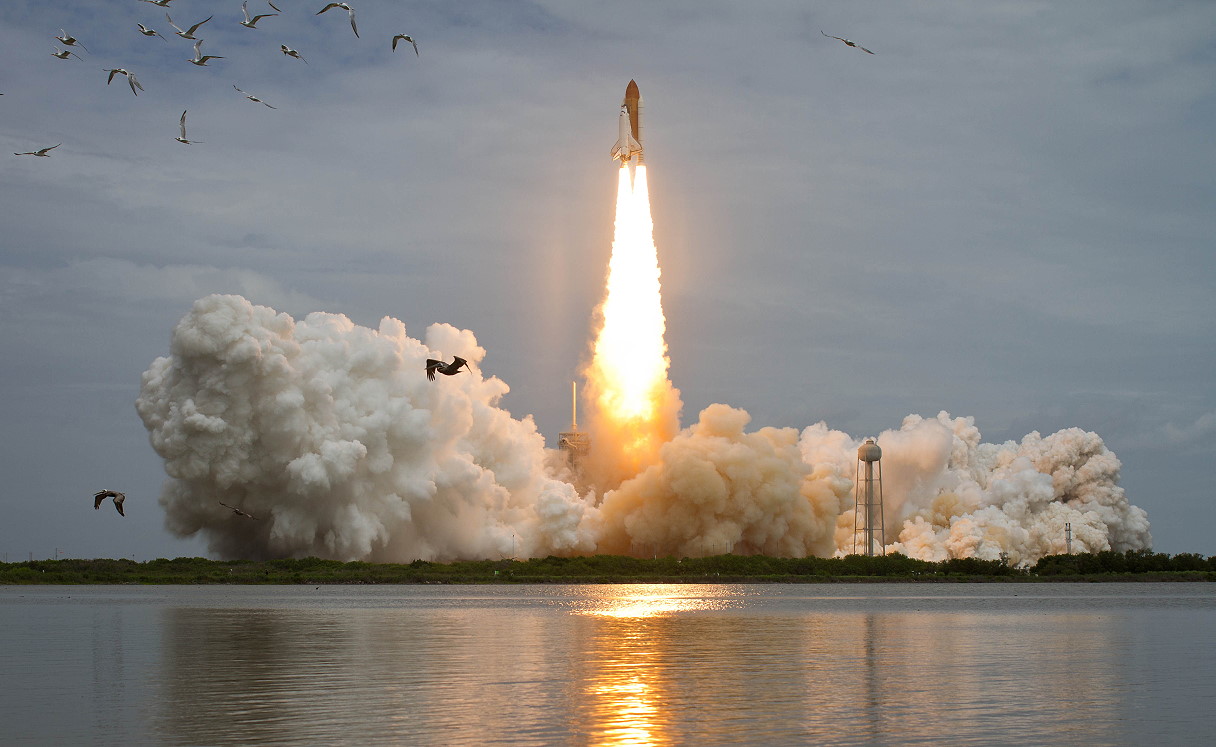
Flexing against the struts which anchored her to the ET—in a phenomenon nicknamed “the twang”—Atlantis seemed to strain for her last leap toward the stars.
“ … two, one, zero and Liftoff … the final liftoff of Atlantis,” exulted Diller. “On the shoulders of the Space Shuttle, America will continue the dream!”
It was 11:29 a.m. EDT.
After almost 10 months of training and three hours on their backs in Atlantis’ cockpit, tempered by the agonizing hold at T-31, the joy was evident in Chris Ferguson’s voice as he made the standard “Roll Program, Houston” call at T+10 seconds.
“Roger Roll, Atlantis,” came the reply from Capcom Barry “Butch” Wilmore, seated in the Mission Control Center (MCC) at the Johnson Space Center (JSC) in Houston, Texas. Narrated uphill by NASA PAO Rob Navias, Atlantis cleared the launch tower and rose into the clear morning sky, kicking off “a sentimental journey into history.” Flying in a heads-down, wings-level orientation, a failed transducer, requiring no action, was the only event which marred an otherwise perfect ascent. For the 33rd time, Atlantis had given her crew a smooth voyage to orbit. And for the next 13 days, STS-135 would play a critical role in stocking the ISS for the post-shuttle era.
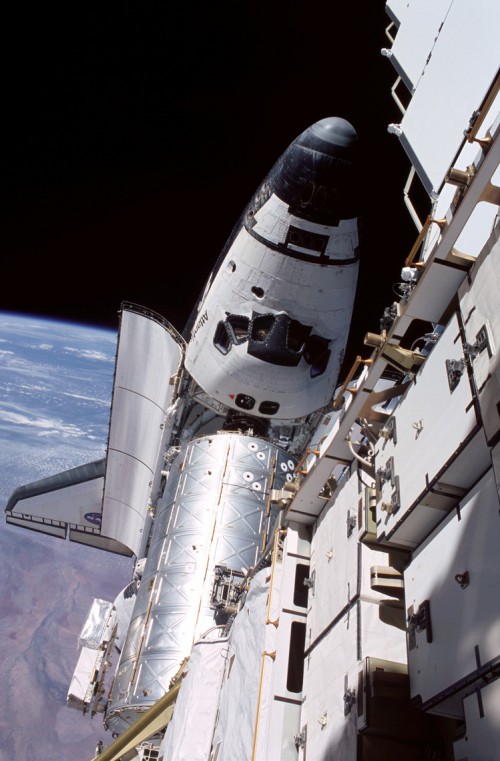
As outlined in yesterday’s AmericaSpace article, Atlantis’ long career had already reached dizzying heights by the turn of the millennium. Between her maiden launch in October 1985 and her 20th landing in October 1997, she had conducted more dedicated Department of Defense missions (five) and more visits to Russia’s Mir space station (seven) than any of her sister orbiters. She had delivered humans from the United States and France, Russia and Canada, and had launched the first national spacefarers from Belgium and Mexico, and from Switzerland and Italy. She had carried the shuttle’s first planetary passengers—the Venus-bound Magellan and the Jupiter-headed Galileo—aloft and had boosted the second of NASA’s Great Observatories into orbit to complement HST.
By the time she returned to flight for her 21st space voyage in May 2000, on STS-101, Atlantis outwardly resembled the vehicle which had first flown almost 15 years earlier, but inwardly she boasted multiple enhancements. Her internal airlock had been removed and replaced with an integrated external airlock and Orbiter Docking System (ODS) for space station operations, her navigation hardware had been updated, a new drag chute had been installed beneath her vertical stabilizer and she became the first member of the shuttle fleet to sport the new Multifunction Electronic Display Subsystem (MEDS). The latter—with its 11 full-color, flat-panel displays—transformed Atlantis’ flight deck from a 1970s-era instrument suite into a more modern “glass cockpit” layout.
STS-101 was the first of 12 visits by Atlantis to the ISS. It came almost 18 months after the launch of the multi-national outpost’s first major elements and served to conduct essential maintenance, prior to the arrival of Russia’s Zvezda service module in July 2000. Delays to the launch of this module, which provided early quarters for the first ISS expedition crews, had already forced STS-101 to be split into two “halves,” the second of which—STS-106, also flown by Atlantis, in September 2000—outfitted Zvezda and readied it for occupation. Yet Atlantis’ primary role as the trucker of major ISS hardware into orbit was only just beginning. In February 2001, arguably her most important flight to date took place, when she undertook STS-98 and delivered the Destiny module to the station. In addition to its role as the principal U.S. laboratory on the ISS, Destiny also served as the nerve center and command network and its arrival marked a turn in the road as the nascent station began to grow. STS-98 astronauts Tom Jones and Bob Curbeam staged three EVAs, one of which marked the 100th U.S. spacewalk in history and even triggered rumors of a “secret” excursion, perhaps conducted years earlier, during one of Atlantis’ classified Department of Defense missions.
Over the next 18 months, Atlantis flew on three further occasions, delivering Quest—a unique “joint airlock,” capable of handling both U.S. and Russian space suits and their equipment—during STS-104 in July 2001 and installing and activating the first two major elements of the ITS, which provides the station’s structural backbone and support for its solar arrays, radiators, and batteries, on STS-110 and STS-112 in April and October 2002. The following year, 2003, was expected to feature another pair of flights by Atlantis, which would have seen her exchange ISS expedition crews for the first time. Sadly, it was not to be. On 1 February 2003, just four weeks before Atlantis was due to fly STS-114, her sister Columbia was lost during re-entry and the entire shuttle program ground to a halt for more than two years. Not until 9 September 2006, and the third post-Columbia mission, would Atlantis again rocket into orbit. It would be her 27th flight.
During that mission, STS-115, and her next—STS-117 in June 2007—she would deliver, install and activate solar arrays, batteries, and radiators on two major ITS segments on the port and starboard sides of the space station. STS-117 was notable in that it saw Atlantis perform her first ISS crew rotation, bringing home Expedition 15 astronaut Suni Williams and dropping off her replacement, Clay Anderson. During the mission, commanded by Rick Sturckow, she circled Earth 219 times and traveled 5.8 million miles (9.3 million km). But STS-117’s real claim to fame was that it secured the record for Atlantis’ longest single mission, at 13 days, 20 hours, 12 minutes, and 44 seconds, eclipsing her previous “personal best” of just 2.5 hours shy of 13 days on STS-98, more than six years earlier. With her safe touchdown at the close of STS-117, Atlantis successfully completed her 28th mission, just surpassing tragic Columbia to become the second most-flown member of the shuttle fleet, behind Discovery.
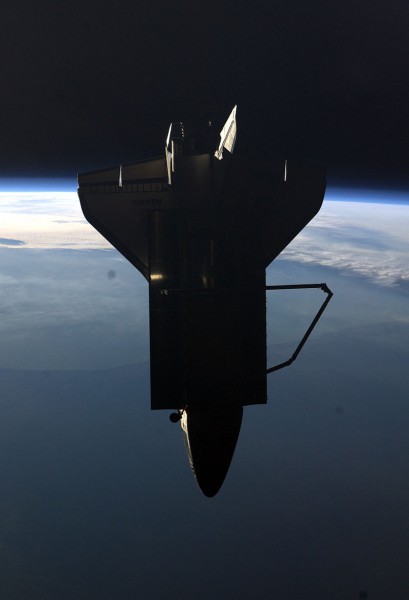
At the time, it was expected that a handful of other missions remained on the books and long-range processing manifests—which saw the shuttle program closing out with STS-132 on Atlantis, STS-134 on Endeavour, and STS-133 on Discovery—were expected to see Atlantis become the first orbiter to be intentionally retired from service. After extensive delays, in February 2008, Commander Steve Frick led Atlantis’ STS-122 mission to deliver Europe’s long-awaited Columbus laboratory to the ISS. Next up would have been STS-125, the long-awaited final servicing of HST, whose addition to the post-Columbia shuttle manifest had come about following a lengthy and highly controversial campaign, involving politicians, the scientific community and members of the public. Originally targeted for the fall of 2008, technical problems with the iconic telescope eventually pushed STS-125 into May 2009. Its crew included Greg “Ray Jay” Johnson, who, at 54, became the oldest man ever to pilot a shuttle mission, and it also marked Atlantis’ only mission to feature as many as five back-to-back EVAs, totaling over 37 hours. Her penultimate and final planned missions, STS-129 in November 2009 and STS-132 in May 2010, were tasked with installing the final major pressurized and unpressurized elements onto the ISS. On the first of these missions, Atlantis made her visit to a station will a full staff of six astronauts and cosmonauts, whilst on the second mission she supported her final EVAs. Although STS-135 would witness a spacewalk during Atlantis’ time aloft, it would be executed by the ISS crew and not from the shuttle herself.
It was confidently expected that STS-132 would likely represent her final mission. “There are thousands of folks out there that have taken care of this bird for a long time,” said STS-132 Commander Ken Ham, before launch. “We’re going to take her on her 32nd flight and, if you don’t mind, we’ll take her out of the barn and make a few more laps around the planet.” However, Atlantis was already tasked to provide Launch On Need (LON) support for Endeavour’s final flight, in an unscheduled flight dubbed “STS-335,” for which she received her crew of Ferguson, Hurley, Magnus, and Walheim in September 2010. However, not until January of the following year—after extensive negotiations—did the mission designation eventually shift from an LON to an actual flight, STS-135.
Returning to Earth on 21 July 2011, after her fifth-longest mission, Atlantis and her multitude of crews could be justifiably proud of their accomplishments, across three decades of operational service. Across her 33 voyages, she had logged 306 days, 14 hours, 12 minutes, and 43 seconds—less than a week longer than her sister Columbia and a full 59 days shy of the fleet leader, Discovery—and had traveled 125.9 million (202.7 million km). Two years later, in June 2013, she began her 34th and final mission, as the starring exhibit in a dedicated $100 million facility at the Kennedy Space Center Visitor Complex (KSCVC), serving to enthuse and inspire future generations of scientists, engineers, teachers, explorers, and dreamers. And, with this in mind, perhaps “Mission 34” will be Atlantis’ most important and far-reaching assignment of all.
Be sure to “Like” AmericaSpace on Facebook and follow us on Twitter: @AmericaSpace
.




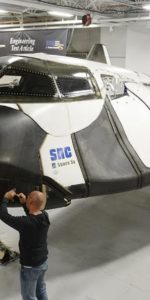

4 Comments
4 Pings & Trackbacks
Pingback:SpaceX Receives First Order for Space Station Crew-Exchange Mission « AmericaSpace
Pingback:Boeing Receives Second Post-Certification Commercial Crew Mission « AmericaSpace
Pingback:‘Obviously A Major Malfunction’: 30 Years Since the Loss of Challenger (Part 1) « AmericaSpace
Pingback:Three Spacefarers From Three Nations Discuss Four-Month Mission to Space Station « AmericaSpace